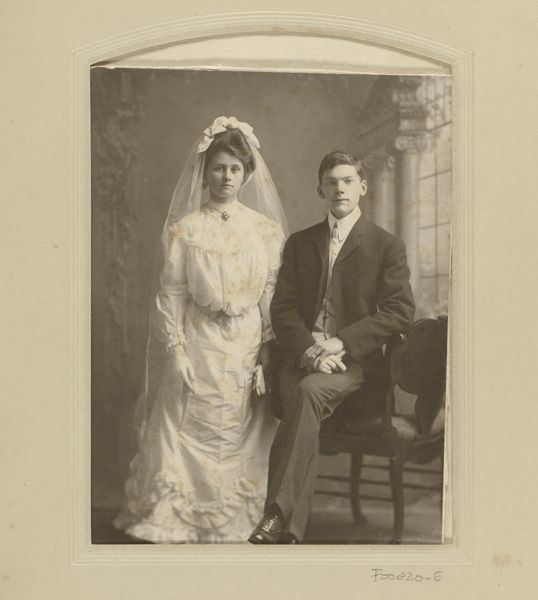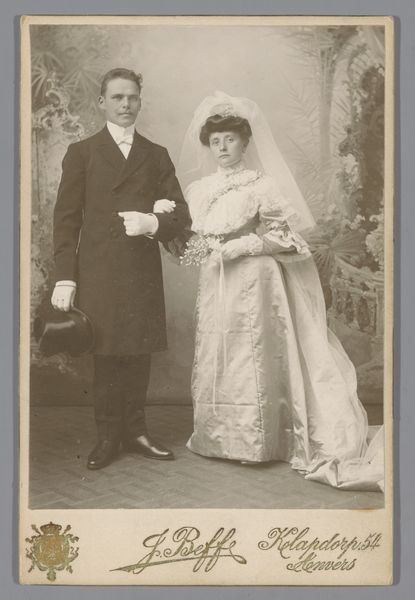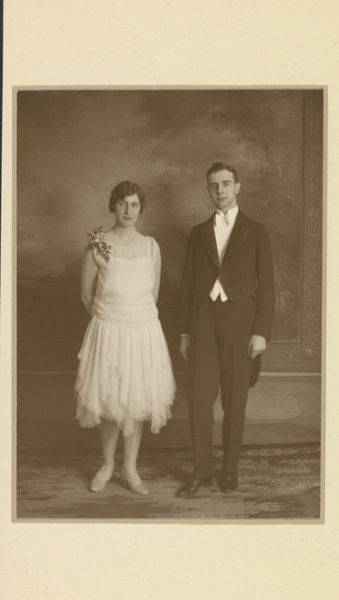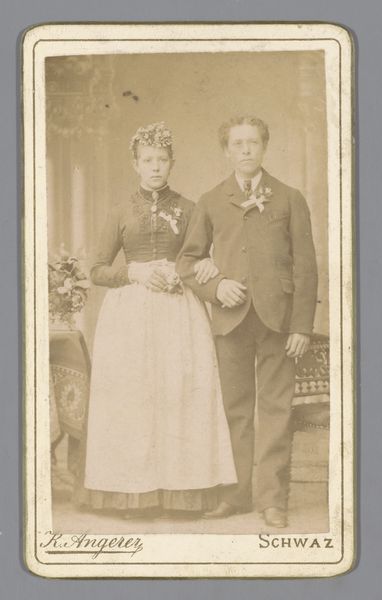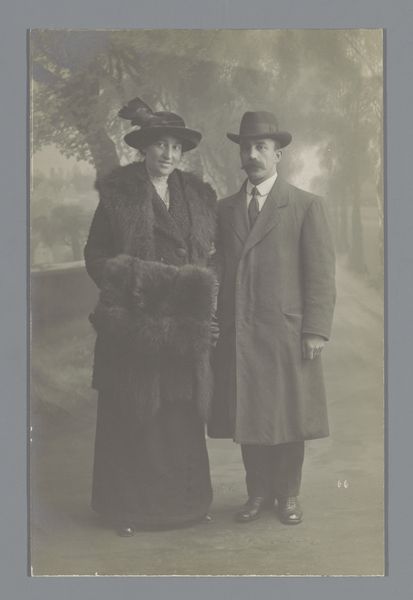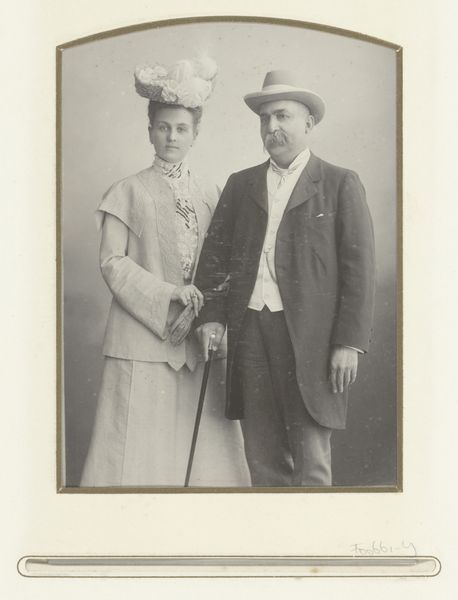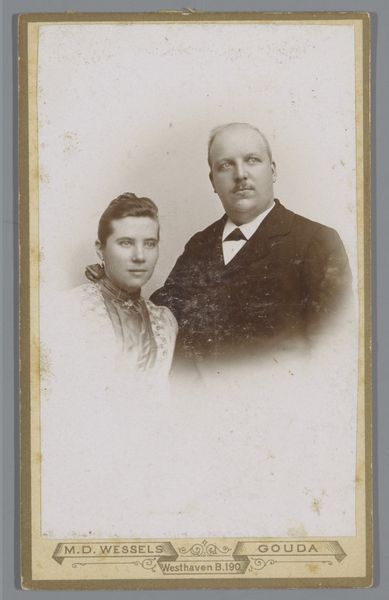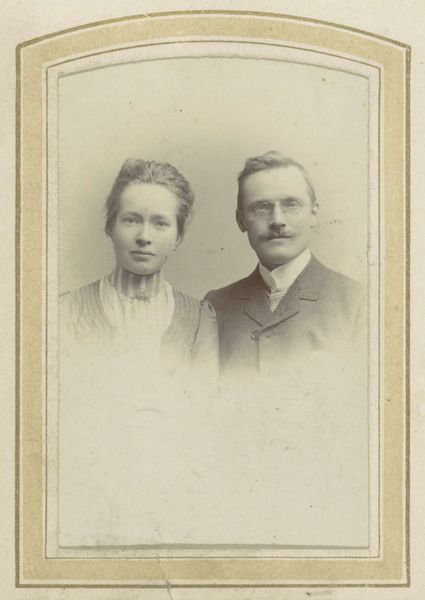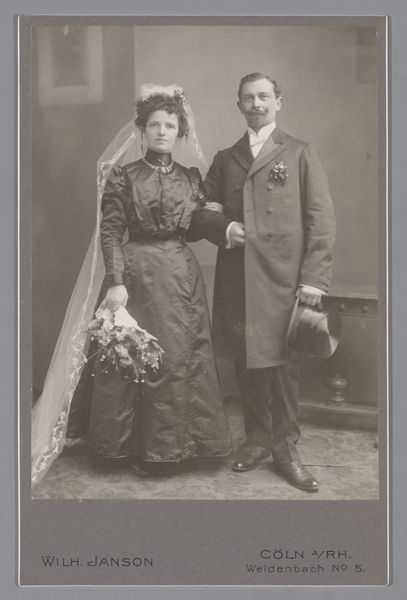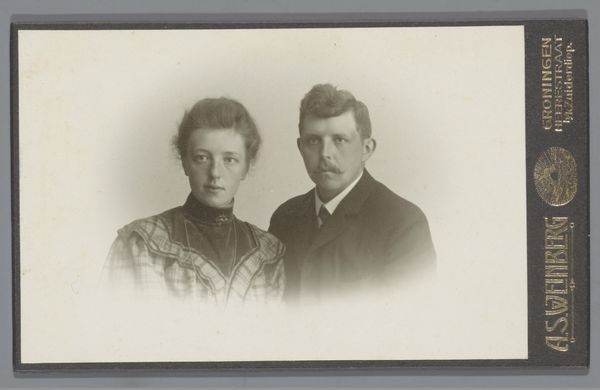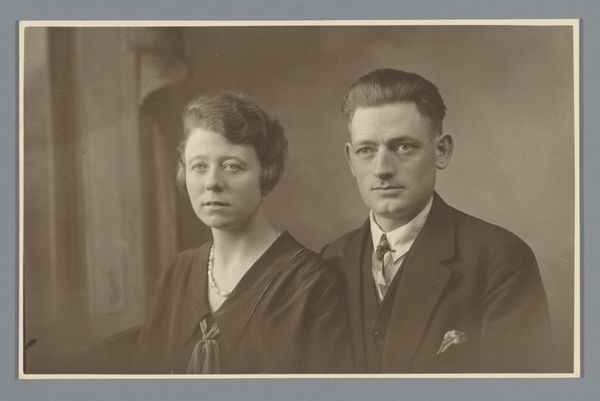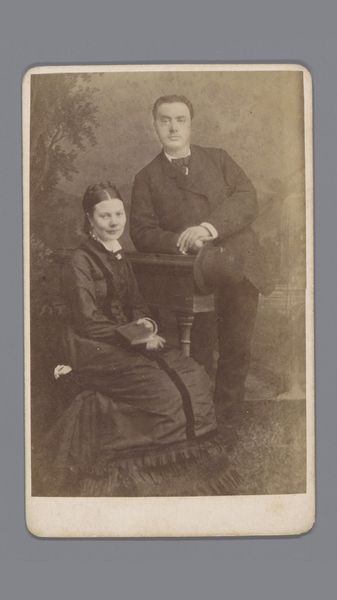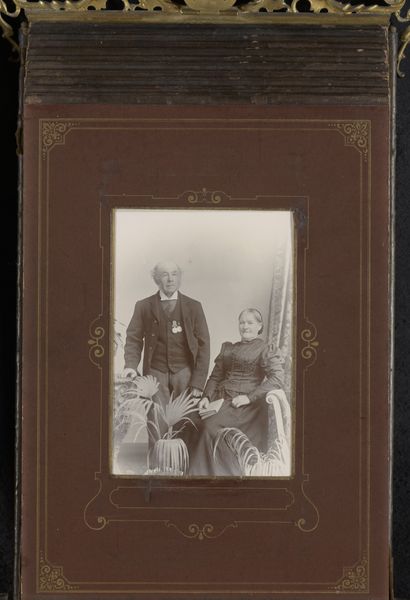
photography, gelatin-silver-print
portrait
print photography
pictorialism
photography
historical photography
portrait reference
group-portraits
gelatin-silver-print
Dimensions: height 177 mm, width 120 mm
Copyright: Rijks Museum: Open Domain
Curator: Before us, we have a gelatin-silver print dating from between 1898 and 1913. The work, attributed to Lodewijk van de Winkel, is entitled “Portret van een onbekende man en vrouw,” or Portrait of an Unknown Man and Woman. Editor: The word "unknown" really leaps out here; it makes one wonder about the narratives and histories forever concealed. There's something undeniably melancholic about it—a longing and a palpable weight of the past. The soft, blurred focus is so striking too. Curator: It does reflect the aesthetics of pictorialism, which sought to elevate photography to the level of art through manipulation of the image. This portrait evokes the painted portraits of earlier eras but uses photographic means. The couple presented probably visited Van de Winkel's studio and sat for this image. Editor: I find myself speculating on the socio-political dimensions of this piece. Photography opened up representation to a broader spectrum of society, documenting its emerging middle classes in a way never seen before. But whose stories were being recorded? Were they really represented or still othered by the photographer's lens? Curator: It is fascinating to consider. These formal portraits offered access to a visual representation of themselves for those who might not have otherwise had it. Yet, the conventions of pose and presentation were still very much dictated by societal norms and, perhaps, the photographer's own biases. This reminds us of how even seemingly objective records, like photographs, are shaped by power dynamics and societal contexts. Editor: Indeed. I am interested in how a photograph from more than 100 years ago resonates in contemporary dialogues about visibility, representation, and agency. And it is vital to continually investigate those questions. What does this image communicate, or obscure, to those in a society striving for inclusivity? Curator: The photograph compels us to ponder its significance as both a historical record and an artistic representation of a moment. We are invited to scrutinize the subtle ways in which artistic and social narratives interweave. Editor: And for me, that melancholy remains—a stark, black and white echo summoning a renewed emphasis on social responsibilities in all the practices.
Comments
No comments
Be the first to comment and join the conversation on the ultimate creative platform.
